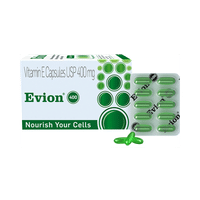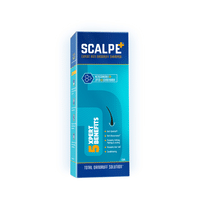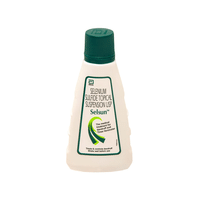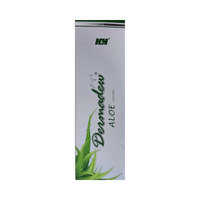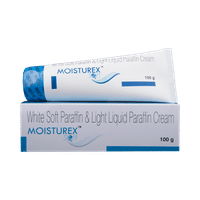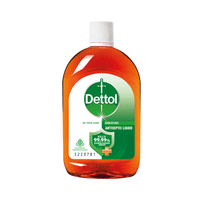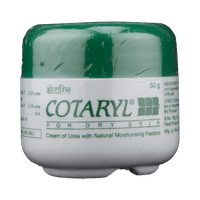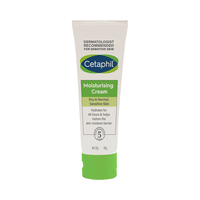Clotilix-M Cream
Rs.107for 1 tube(s) (15 gm Cream each)
food interaction for Clotilix-M
alcohol interaction for Clotilix-M
pregnancy interaction for Clotilix-M
lactation interaction for Clotilix-M
medicine interaction for Clotilix-M
food
alcohol
pregnancy
lactation
medicine
No interaction found/established
No interaction found/established
Clotilix-M Cream may be unsafe to use during pregnancy. Although there are limited studies in humans, animal studies have shown harmful effects on the developing baby. Your doctor will weigh the benefits and any potential risks before prescribing it to you. Please consult your doctor.
CONSULT YOUR DOCTOR
Clotilix-M Cream is probably safe to use during breastfeeding. Limited human data suggests that the drug does not represent any significant risk to the baby.
SAFE IF PRESCRIBED
No interaction found/established
SALT INFORMATION FOR Clotilix-M
Mometasone(0.1% w/w)
Uses
Mometasone is used in the treatment of skin conditions with inflammation & itching.
How it works
Mometasone is a steroid which works by blocking the production of certain chemical messengers in the body that cause inflammation (redness and swelling) and allergies.
Common side effects
Headache, Sore throat, Itching, Nosebleeds, Skin atrophy, Paresthesia (tingling or pricking sensation), Viral infection, Upper respiratory tract infection, Vomiting, Diarrhea, Indigestion, Ear pain, Flu-like symptoms, Muscle pain, Nausea, Inflammation of the nose, Nasal ulceration, Fungal infection of mouth, Nasal burning, Anaphylactic reaction, Angioedema (swelling of deeper layers of skin), Taste change, Parosmia (altered sense of smell), Blurred vision, Skin depigmentation, Stretch marks, Miliaria (sweat rash)
Clotrimazole(1% w/w)
Uses
Clotrimazole is used in the treatment of fungal infections.
How it works
Clotrimazole is an antifungal medication. It kills and stops the growth of the fungi by destroying its cell membrane, thereby treating your skin infection.
Common side effects
Blisters, Erythema (skin redness), Vaginal discharge, Genital peeling, Burning sensation of the penis (of sexual partner), Stinging sensation, Edema (swelling), Vaginal burning sensation, Skin irritation, Allergic reaction, Polyuria, Vaginal itching, Vaginal bleeding, Pain in vagina, Vaginal swelling
SUBSTITUTES FOR Clotilix-M
4 Substitutes
4 Substitutes
Sorted By
 Rs. 215pay 196% more per gm of Cream
Rs. 215pay 196% more per gm of Cream Rs. 128pay 74% more per gm of Cream
Rs. 128pay 74% more per gm of Cream Rs. 125pay 13% more per gm of Cream
Rs. 125pay 13% more per gm of Cream Rs. 133.40save 10% more per gm of Cream
Rs. 133.40save 10% more per gm of Cream
Expert advice FOR Clotilix-M
- Mometasone is used to treat the redness, swelling, itching, and discomfort of various skin conditions.
- It should be applied to the affected areas as a thin film two or three times daily, or as advised by your doctor.
- Do not use it more often or for longer than advised by your doctor.
- Do not cover the area being treated with airtight dressings such as bandages unless directed by a doctor, as this may increase the risk of side effects.
- If you think the area of skin you are treating has become infected you should stop using Mometasone and consult your doctor.
- Consult your doctor if your skin condition has not improved after 2 weeks of treatment.
Frequently asked questions FOR Clotilix-M
Mometasone
Q. Is Mometasone an antifungal, an antibiotic or a steroid?
Mometasone is neither an antifungal nor an antibiotic. It is a corticosteroid which is used to reduce inflammation (redness, swelling) in various conditions. It is available as an ointment, cream and lotion for external application. It is also available as a nasal spray or powder for inhalation.
Q. Mometasone is effective for my child. Can I extend the treatment a little longer?
You should use Mometasone as advised by your doctor, especially in children. Using more than the recommended dose or even extending the duration may cause hormonal imbalance in your child. As a result, the child may develop puffiness or rounding of face and there could be delay in growth and development. Therefore, consult the doctor before trying any dose adjustments.
Q. What is Mometasone used for?
Mometasone is a steroid medicine which is used on the skin to relieve inflammatory and itchy skin diseases. It also helps in reducing redness, scaling and swelling associated with these conditions. Do not take this medicine without consulting your doctor.
Clotrimazole
Q. What is Clotrimazole used for?
Clotrimazole is an antifungal medicine. It is used to treat fungal skin infections such as ringworm (fungal skin infection that causes a red scaly rash on different parts of the body), athlete’s foot (fungal infection of the skin on the feet and between the toes), fungal nappy rash and fungal sweat rash. It is also used to relieve irritation of the vulva (external thrush) and irritation occurring at the end of the penis, which may be associated with thrush.
Q. Clotrimazole is effective against which fungi?
Clotrimazole is effective against Trichophyton species which cause ringworm infection, athlete’s foot, and jock itch (fungal infection of the skin in the groin or buttocks). It is also effective against yeast known as Candida which commonly causes vaginal thrush (infection caused by an overgrowth of yeast called Candida albicans).
Q. I have started using Clotrimazole. By when can I expect to start seeing the improvements?
The symptoms of skin infection, such as itching or soreness, should improve within a few days of treatment. However, the signs such as redness and scaling may take longer to disappear. Do not stop applying this medicine before the duration advised by your doctor, even if you feel better.













